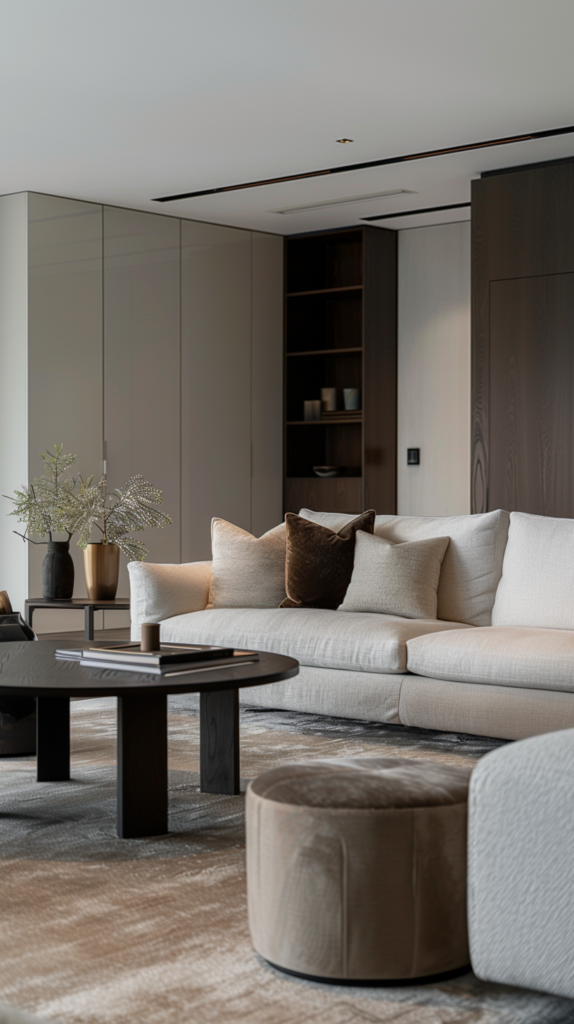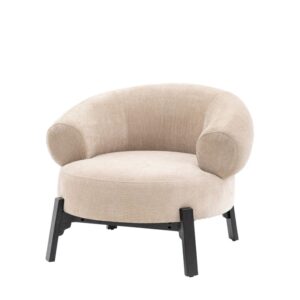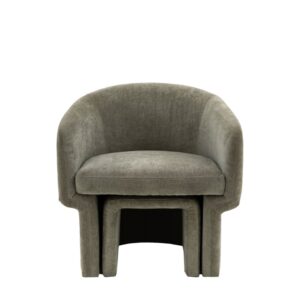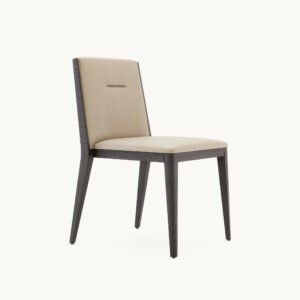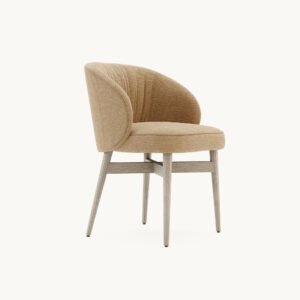Trends
THE TIMELESS APPEAL OF EARTHY TONES IN INTERIOR DESIGN
Unveil Luxury, Unleash Comfort – Eclectic Niche.
Craving a home that feels like a calming sanctuary? Look beyond the trendy color of the month and embrace the enduring allure of earthy tones – a timeless palette that evokes a sense of grounded elegance and organic beauty. These nature-inspired hues (think warm beiges, rich browns, and soothing greens) are surging in popularity for their ability to create warm, inviting, and grounded spaces. Earthy tones refer to colors inspired by nature, such as browns, beiges, greens, terracottas, and warm neutrals like taupe and sand. These hues are reminiscent of natural elements like soil, stones, foliage, and sunsets. Earthy tones are typically muted, subdued, and have a low saturation level compared to brighter colors. They evoke a sense of warmth, comfort, and groundedness, making them popular choices in interior design for creating inviting and harmonious spaces.
Historical Journey of Earthy Tones in Interior
Earthy tones have been more than just colours; reflecting our relationship with the natural world, our cultural heritage, and our desire for beauty and meaning in our surroundings. In ancient civilizations like Mesopotamia and Egypt, natural materials such as clay and stone were abundant, leading to the widespread use of earthy colors like terracotta, ochre, and sandy beige in interior spaces. These colors not only reflected the availability of local resources but also symbolized a deep connection to the earth and its elements.
During the medieval and Renaissance periods in Europe, earthy tones dominated interior design, but with variations influenced by regional aesthetics.
Natural pigments derived from minerals and plants were used to create a palette dominated by browns, greens, and muted reds, which adorned the walls and furnishings of castles, churches, and manor houses. These colors were not only aesthetically pleasing but also carried symbolic meaning, representing themes of wealth, power, and spirituality.
In the late 19th and early 20th centuries, the Arts and Crafts movement emerged as a reaction to industrialization, advocating for handcrafted, nature-inspired design. Earthy tones such as olive green, mustard yellow, and deep brown were favored during this period, reflecting a desire to reconnect with nature and traditional craftsmanship. These colors were often paired with natural materials like wood and stone, creating interiors that exuded warmth, simplicity, and authenticity.
In the mid-20th century, the Mid-Century Modern movement embraced earthy tones as part of its minimalist aesthetic. Neutral colors like beige, tan, and taupe were used alongside pops of vibrant hues, creating a balanced and harmonious look that emphasized clean lines and organic forms. This approach to color reflected a shift towards a more functional and uncluttered style of living, while still celebrating the beauty and richness of natural colors.
Psychological Impact of Earthy Tones
A. Warmth and Comfort: Earthy tones evoke feelings of warmth and comfort due to their association with natural elements like soil, stone, and wood. These colors, such as warm browns, terracotta, and creamy beiges, create a cozy and inviting atmosphere, making spaces feel more welcoming and homely. The warmth of earthy tones can have a calming effect on occupants, promoting a sense of security and relaxation.
B. Connection to Nature and Sustainability: Earthy tones are closely linked to nature and sustainability, reflecting the colors found in the natural world. Shades like greens, earthy blues, and muted yellows bring elements of the outdoors inside, fostering a connection to the environment. This connection to nature can enhance well-being, reduce stress, and promote a sense of harmony with the surroundings, especially in urban environments where access to nature may be limited.
C. Relaxation and Tranquility: The use of earthy tones in interior design is often associated with creating spaces that exude a sense of relaxation and tranquility. Soft neutrals, gentle greens, and earthy grays help to create a serene ambiance, ideal for areas like bedrooms, living rooms, and meditation spaces. These colors have a calming effect on the mind and can contribute to a more peaceful and stress-free environment, promoting rest and rejuvenation.
-

Laskasas
Ambrose armchair
£2,401 – £3,062 Select options This product has multiple variants. The options may be chosen on the product page -

Hamilton Barnes
Arlo Armchair
£910 Select options This product has multiple variants. The options may be chosen on the product page -

North West
Weymouth 3 Drawer Unit With Shelf
£228 Add to cart
The Allure of Earthy Tones
Earthy tones play a significant role in color theory, they offer a rich palette that draws inspiration from nature’s elements. These tones are typically derived from shades of brown, green, gray, and muted tones of red, yellow, and orange, evoking a sense of warmth, groundedness, and organic beauty.
Complementary colors are those directly opposite each other on the wheel, such as green and red-brown or blue-green and terracotta. When earthy tones are paired with, complementary colors they create dynamic contrasts that enhance visual interest and vibrancy in interior spaces. For earthy tones, harmonious combinations can include shades of green and yellow, brown and beige, or gray and taupe. These harmonious schemes offer a sense of cohesion, balance, and unity, creating a soothing and visually pleasing environment and encompassing a spectrum of colors inspired by the natural world, reflecting the hues found in soil, rocks, vegetation, and landscapes.
The earthy tones are foundational colors that can be paired with brighter accents or used as the main theme for a more subdued and soothing ambiance. They are also associated with sustainability and eco-friendliness, aligning with the growing trend of incorporating natural elements into interior spaces. The versatility of earthy tones allows them to adapt to various design styles and aesthetics.
These colors are characterized by their warm, muted, and organic qualities, often evoking a sense of coziness, tranquility, and connection to nature. Here are some of the key colors within this spectrum:
- Brown: As the quintessential earthy color, brown evokes feelings of stability, security, and reliability. It is often associated with the earth itself, symbolizing strength, grounding, and a connection to the natural world. Brown is calming and comforting, making it an ideal choice for creating cozy and inviting interiors.
- Beige: Beige is a neutral color with warm undertones, resembling the sandy tones of desert landscapes. It conveys a sense of simplicity, serenity, and timelessness. Beige is versatile and adaptable, providing a neutral backdrop that can be easily paired with other colors and textures to create a harmonious and balanced environment.
- Tan: Tan is a light brown color that exudes warmth and sophistication. It has a soothing and calming effect, promoting relaxation and comfort. Tan is often associated with natural materials like leather and wood, evoking a sense of rustic charm and organic elegance.
- Olive: Olive is a muted green color with hints of brown and yellow, reminiscent of the foliage found in forests and meadows. It represents growth, renewal, and vitality, conveying a sense of harmony and balance. Olive is refreshing and rejuvenating, bringing a touch of nature indoors and fostering a connection to the outdoors.
- Terracotta: Terracotta is a warm, reddish-brown color inspired by clay and earthenware. It evokes feelings of warmth, creativity, and authenticity. Terracotta adds a pop of color to interiors while still maintaining a natural and earthy aesthetic. It is often used to create a sense of Mediterranean or Southwestern-inspired style.
These core colors provide a versatile starting point for creating inviting and harmonious interior spaces inspired by the earth’s natural beauty. In addition to these major hues, the earthy tones palette encompasses a wide range of hues inspired by the natural world, from warm browns and earthy greens to subtle neutrals and muted reds, providing ample options for creating a harmonious and inviting interior design palette with each contributing its unique character and charm.
They include: taupe, sand, camel, khaki, buff, sepia, umber, sienna, ochre, rust, copper, mahogany, walnut, chestnut, cocoa, caramel, honey, maple, oak, pine, sage, moss, forest green, hunter green, emerald, teal, turquoise, slate, stone, charcoal, ash, granite, pebble, clay, brick, coral, maroon, burgundy, mauve, dusty rose, blush, salmon, burnt orange, pumpkin and mustard.
Characteristics of Earthy Tones
The characteristics of earthy tones primarily describe the visual and aesthetic qualities of these colors, including warmth, versatility, timelessness, and their connection to nature. These features include:
1. Warmth: Earthy tones typically lean towards the warmer end of the color spectrum, with undertones of red, yellow, or orange. This warmth creates a welcoming and inviting atmosphere within a space, making it feel more intimate and comfortable.
2. Muted Palette: Unlike vibrant or bold colors, earthy tones are subdued and understated. They have a muted quality that adds depth and sophistication to interior spaces without overwhelming them. This subtlety allows earthy tones to serve as versatile base colors or accents in various design schemes.
3. Natural Inspiration: Earthy tones draw inspiration from the natural environment, including elements such as soil, sand, stone, wood, and foliage. They mimic the colors of the earth, bringing elements of the outdoors into interior spaces and fostering a sense of harmony and balance.
4. Versatility: One of the key characteristics of earthy tones is their versatility. They can be used as primary colors in a design scheme or as accents to complement bolder shades. Earthy tones also pair well with a wide range of colors, including neutrals, pastels, and jewel tones, making them adaptable to different design preferences and aesthetics.
5. Timelessness: Earthy tones have a timeless quality that transcends passing trends. While specific shades may come in and out of fashion, the overall concept of using natural, earth-inspired colors remains enduringly popular. This timelessness makes earthy tones a reliable choice for creating timeless and enduring interior spaces.
6. Harmonious Blend: When used together, earthy tones create a harmonious and cohesive color palette that reflects the natural balance found in the environment. Whether combined within a monochromatic scheme or mixed with complementary colors, earthy tones work together to create visually pleasing and emotionally resonant interiors.

Earthy Tones in Different Design Styles
A. Rustic and Farmhouse Aesthetics: In rustic and farmhouse design styles, earthy tones play a pivotal role in creating a warm and inviting atmosphere reminiscent of rural landscapes. Colors like warm browns, soft greens, and muted yellows are commonly used to evoke a sense of coziness and nostalgia. These tones are often found in natural materials such as reclaimed wood, exposed brick, and distressed finishes, adding to the authenticity of the rustic aesthetic. In farmhouse kitchens, earthy tones are prevalent in cabinetry, countertops, and decorative elements, contributing to a timeless and charming ambiance.
B. Scandinavian and Minimalist Designs: Scandinavian and minimalist interiors embrace earthy tones as a fundamental aspect of their design philosophy, focusing on simplicity, functionality, and harmony. Light, neutral colors like soft whites, beige, and light grays dominate these styles, creating a clean and serene environment. Earthy hues are often used in natural wood furniture, flooring, and accents to bring warmth and texture to minimalist spaces. The combination of earthy tones with minimalist design principles results in spaces that feel calm, uncluttered, and effortlessly stylish.
C. Bohemian and Eclectic Interiors: Bohemian and eclectic interiors celebrate the use of vibrant earthy tones alongside rich jewel tones and global-inspired patterns. Earthy colors like terracotta, burnt orange, deep greens, and ochre complement the eclectic mix of textures, fabrics, and decorative elements in bohemian design. These tones are often seen in layered rugs, eclectic artwork, and textured upholstery, creating a visually dynamic and culturally rich space. The eclectic nature of bohemian design allows for creative freedom in combining earthy tones with bold hues, resulting in a lively and expressive interior.
D. Modern and Contemporary Spaces: In modern and contemporary design, earthy tones are used strategically to create a sense of balance and warmth in sleek and minimalist spaces. Neutral earthy colors such as taupe, charcoal gray, and warm beige provide a grounding element amidst the clean lines and geometric shapes typical of modern design. These tones are often found in furniture upholstery, accent walls, and natural stone surfaces, adding depth and sophistication to contemporary interiors. The juxtaposition of earthy tones with modern elements like glass, metal, and polished surfaces creates a harmonious and inviting environment that is both timeless and current.
Incorporating Earthy Tones in Interior Design
Incorporating earthy tones into interior design involves a thoughtful approach to color selection, materials, textures, and lighting. These elements collectively contribute to creating spaces that feel grounded, inviting, and harmonious.
A. Walls and Surfaces
Paint Colors and Wall Treatments: Earthy tones encompass a range of warm, nature-inspired hues such as beige, taupe, terracotta, olive green, and shades of brown. These colors are ideal for painting walls, as they create a soothing backdrop that complements various design styles. Additionally, textured wall treatments like faux finishes, textured paints, or wallpaper with earthy patterns can add depth and visual interest to the space.
Natural Materials and Textures: To enhance the earthy ambiance, consider incorporating natural materials into wall surfaces. Materials like exposed brick, stone veneers, reclaimed wood paneling, or textured wall tiles can infuse a sense of warmth and authenticity. These textures not only align with earthy tones but also add tactile appeal, creating a multi-dimensional and inviting environment.
B. Furniture and Accessories
Upholstery and Fabrics: Upholstered furniture in earthy tones such as warm browns, soft greens, or muted oranges can anchor the design scheme. Fabrics like linen, cotton, or wool with natural textures and subtle patterns complement earthy tones beautifully. Throw pillows, area rugs, and draperies in earth-inspired colors and textures add layers of comfort and style.
Wood Furniture and Finishes: Wood is a quintessential material for earthy interiors, offering warmth, durability, and a connection to nature. Opt for furniture pieces with wood finishes in tones like walnut, oak, or maple to harmonize with earthy color palettes. Natural wood grain patterns and rustic finishes enhance the organic feel of the space.
Decorative Elements and Artwork: Accessories and artwork can further accentuate earthy tones in the design. Choose decor items such as ceramic vases, woven baskets, botanical prints, or nature-inspired sculptures in complementary colors. Artwork featuring landscapes, botanical motifs, or abstract earthy compositions adds visual intrigue and reinforces the natural theme.
C. Lighting and Accents
Warm Lighting Fixtures: Lighting plays a crucial role in setting the ambiance and highlighting earthy tones. Opt for warm lighting fixtures with soft, ambient glow such as pendant lights with fabric shades, table lamps with textured bases, or floor lamps with earth-toned lampshades. These fixtures create a cozy and inviting atmosphere.
Natural Light Integration: Maximize natural light exposure to enhance the earthy vibe. Allow ample sunlight to filter through windows by using sheer curtains or window treatments that complement earthy colors. This integration of natural light not only illuminates the space but also accentuates the warmth and natural beauty of earthy tones.
Earthy Tone Accents and Decorative Lighting: Incorporate accents like ceramic or glass vessels in earthy hues as decorative elements. Consider decorative lighting fixtures such as sconces, chandeliers, or wall-mounted lights in earthy tones or natural materials like rattan or bamboo. These accents and lighting choices add character and a sense of groundedness to the interior design.
-

Hamilton Barnes
Asoko Armchair
£710 Select options This product has multiple variants. The options may be chosen on the product page -

Domkapa
Frank Chair
£469 – £925 Select options This product has multiple variants. The options may be chosen on the product page -

Domkapa
Norah Chair
£625 – £1,201 Select options This product has multiple variants. The options may be chosen on the product page
Embracing Earthy Tones in Your Interior Space
Integrating earthy tones into interior design offers a transformative approach that celebrates the timeless beauty of nature within our living spaces. The following are some practical tips to embracing earthy tones in your space:
1. Choose Earthy Color Palette: Start by selecting a palette of earthy tones that resonate with you. This may include shades of brown, beige, tan, olive green, terracotta, and muted blues or grays inspired by nature.
2. Use Earthy Tones on Walls: Paint walls in earthy hues to create a warm and inviting backdrop for your space. Alternatively, consider textured wallpapers or natural materials like wood paneling to add depth and character.
3. Incorporate Natural Materials: Introduce furniture and décor made from natural materials such as wood, leather, stone, and rattan. These elements add warmth, texture, and authenticity to your design.
4. Accessorize with Earthy Textiles: Layer throw pillows, blankets, rugs, and curtains in earthy colors and textures to add softness and visual interest to your space. Consider natural fabrics like linen, cotton, wool, and jute for a tactile experience.
5. Bring in Plants: Add houseplants in earthy-toned pots to bring a touch of nature indoors. Not only do plants enhance the aesthetic of your space, but they also purify the air and create a sense of tranquility. Choose earthy-toned pots and containers to complement your color scheme.
6. Accent with Decorative Elements: Decorate with ceramics, artwork, woven baskets, and other decorative accents in earthy tones. These pieces serve as finishing touches that tie the room together as well as add personality and visual appeal while reinforcing the natural theme of your design.
7. Balance with Neutrals: Balance earthy tones with neutral colors like white, cream, or gray to prevent the space from feeling too heavy. Use neutrals as a backdrop and reserve earthy tones for accents and focal points to create visual interest without overpowering the room. Incorporate accent colors sparingly to add pops of contrast and interest.
8. Consider Lighting: Pay attention to lighting, as natural light can enhance earthy tones and create a warm and welcoming atmosphere. Supplement with warm artificial lighting sources like lamps and sconces to add depth and ambiance to your space.
Styling Tips for Earthy Tones
A. Creating Cozy and Inviting Spaces Earthy tones play a pivotal role in creating cozy and inviting interior spaces. Colors like warm browns, soft greens, and earthy neutrals evoke a sense of comfort and relaxation, making them ideal for living rooms, bedrooms, and communal areas. To enhance the cozy ambiance, consider using plush textiles such as wool rugs, knitted throws, and velvet cushions in earthy hues. Incorporating natural elements like wooden furniture, stone accents, and rattan decor further enhances the inviting atmosphere, bringing a touch of nature indoors.
B. Balancing Earthy Tones with Other Colors Achieving a harmonious color palette involves balancing earthy tones with other colors effectively. One approach is to pair earthy hues with complementary colors like soft blues, muted oranges, or warm yellows to create a balanced and visually appealing contrast. Additionally, using neutral shades such as whites, creams, and grays as a backdrop helps highlight earthy tones without overwhelming the space. Experimenting with color swatches and creating mood boards can guide the process of finding the perfect color balance for your interior design scheme.
C. Mixing Different Textures and Materials Texture plays a crucial role in adding depth and visual interest to spaces dominated by earthy tones. Mixing different textures and materials creates a dynamic and tactile experience. For instance, combine rough textures like jute rugs or exposed brick walls with smooth surfaces like polished wood or marble countertops. Incorporating woven elements such as rattan furniture, macrame wall hangings, or natural fiber curtains adds a layer of texture and enhances the organic feel of the space. The contrast between textures adds dimension and richness to the overall design.
D. Bringing Nature Indoors with Plants and Greenery Bringing nature indoors is a key aspect of styling with earthy tones. Incorporating plants and greenery not only adds a pop of color but also introduces life and freshness to the space. Choose indoor plants in varying shades of green and leaf textures to complement earthy color palettes. Succulents, ferns, and trailing vines thrive in indoor environments and can be placed strategically on shelves, tables, or in hanging planters to create a botanical oasis. The combination of earthy tones and natural elements fosters a connection to the outdoors, promoting a sense of well-being and harmony within the home.
E. Go Monochromatic: Going monochromatic with earthy tones involves creating a cohesive color scheme using various shades of a single earthy hue. For example, you might choose a rich brown as your base color and then incorporate lighter and darker shades of brown throughout the space. Start by selecting a dominant shade for the walls, floors, or larger furniture pieces, and then layer in lighter and darker tones for contrast and depth. Consider using different textures and finishes to add visual interest while maintaining the monochromatic theme. For instance, mix smooth leather upholstery with textured fabric pillows, or incorporate glossy ceramics with matte wood finishes. By sticking to a single color family, you create a sense of harmony and continuity throughout the room, while allowing the natural variations in shade and tone to add complexity and sophistication to your design. This approach is versatile and timeless, allowing you to create a space that feels both cohesive and visually dynamic, with earthy tones providing a warm and inviting backdrop for your interior design.
F. Creating a Feature Wall: A feature wall, also known as an accent wall, is a wall within a room that is intentionally designed to stand out and draw attention. It serves as a focal point in the space, highlighting architectural features, adding visual interest, and creating a sense of depth and dimension. Creating a feature wall is an impactful way to incorporate earthy tones into your interior design, adding depth and visual interest to a room.
Begin by selecting the right wall as your focal point and choose an earthy tone that complements your existing color scheme. Prepare the wall by cleaning, repairing, and priming as necessary. If painting, apply multiple coats evenly using a high-quality paintbrush or roller. For wallpaper, measure carefully, apply adhesive, and smooth out any air bubbles or wrinkles. Once dry, add finishing touches like wall art or shelves to enhance the visual impact. A well-executed feature wall in an earthy tone can instantly elevate the ambiance of your space, creating a striking focal point that showcases your design style.
G.Creating a Cozy Reading Nook: This involves selecting a quiet corner or alcove within a room and furnishing it with comfortable seating, soft textiles, and warm lighting to provide a comfortable and inviting space for reading and relaxation. Choose a location with ample natural light, if possible, and consider adding window treatments in earthy hues like beige or terracotta for privacy and ambiance. Select seating options such as a plush armchair or chaise lounge upholstered in earthy fabrics like linen or leather, complemented by cushions and throws in earth-inspired colors such as warm browns, olive greens, or muted blues. Layer the space with cozy textiles like knit blankets, faux fur throws, and oversized pillows in complementary earthy tones to create a warm and inviting atmosphere. Incorporate a side table or bookshelf made from natural materials like wood or rattan to hold reading materials and a lamp with a base in an earthy finish like bronze or copper for task lighting. Enhance the coziness of the space with decorative elements such as potted plants in terracotta pots, scented candles in earthy fragrances, and artwork featuring nature-inspired motifs in earthy colors. Finally, consider adding a rug or carpet in natural fibers like jute or sisal underfoot to define the reading nook and add warmth and texture to the space.
H. Incorporating Vintage Finds: This process involves selecting unique pieces from the past that not only add character and charm but also complement the natural color palette of your space. Start by exploring thrift stores, flea markets, estate sales, and online marketplaces to discover one-of-a-kind treasures in earthy hues like warm browns, rustic terracotta, soft greens, and muted blues. Look for furniture, décor items, and accessories with interesting shapes, textures, and patinas that tell a story and evoke nostalgia while harmonizing with the earthy tones in your design scheme. Mix and match vintage pieces with modern elements to create a curated and eclectic look that feels both timeless and cohesive. Consider incorporating vintage finds such as mid-century wooden furniture, antique rugs in natural fibers, retro lighting fixtures with earthy finishes, and decorative accents like pottery, artwork, and books that complement the overall aesthetic. Embrace imperfections and signs of age, as they add depth, character, and authenticity to your design, resulting in a space that feels warm, inviting, and uniquely yours.
Current Trends
Incorporating earthy tones into interior design is not only timeless but also on-trend, as these colors evoke a sense of tranquility, warmth, and connection to nature that is particularly appealing in today’s fast-paced world. One trendy option for incorporating earthy tones is to use them in combination with other popular design elements, such as minimalist or Scandinavian-inspired décor. For example, pairing earthy hues like olive green or terracotta with clean-lined furniture and natural materials creates a modern yet cozy aesthetic that is both stylish and inviting.
Another trendy approach is to use earthy tones in unexpected ways, such as on ceilings or in small, unexpected details. Painting a ceiling in a soft, earthy hue like sky blue or sage green can create a calming effect and add visual interest to a room. Similarly, incorporating earthy tones in small details like door frames, window trim, or accent walls can add depth and character to a space without overwhelming it. Additionally, mixing earthy tones with bold, statement-making colors is a trend that can create a vibrant and eclectic look. For example, pairing a deep, earthy green with a bright pop of mustard yellow or coral can create a dynamic and visually appealing contrast that adds energy and personality to a room.
Incorporating earthy tones through natural materials is also a popular trend. Using materials like wood, stone, rattan, and jute not only adds texture and depth to a space but also reinforces the connection to nature that earthy tones evoke. This trend aligns with the growing interest in sustainable and eco-friendly design, as natural materials are renewable, biodegradable, and have a lower environmental impact than synthetic alternatives.
Embracing earthy tones in interior design is more than just a trend; it’s an invitation to reconnect with nature and create spaces that nurture our well-being and sense of harmony. By exploring the versatility and timeless appeal of earthy hues, this article aimed to inspire you to embrace these colors in your own homes. From minimalist chic to bohemian bliss, earthy tones offer endless possibilities for creating inviting and harmonious environments that resonate with warmth and tranquility. By incorporating earthy tones into our design schemes, we not only create visually stunning spaces but also cultivate a deeper connection to the natural world, enriching our lives in the process.
